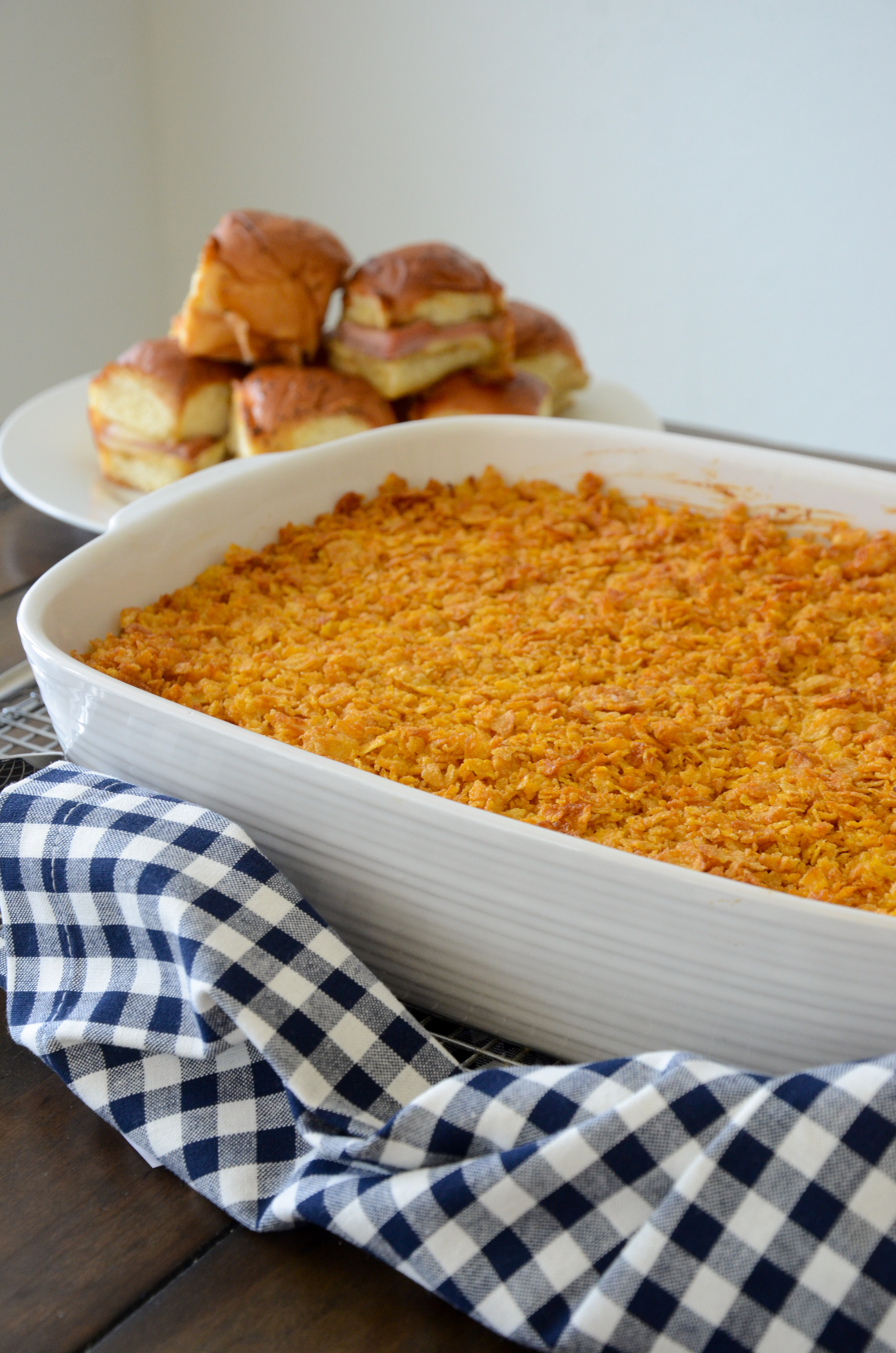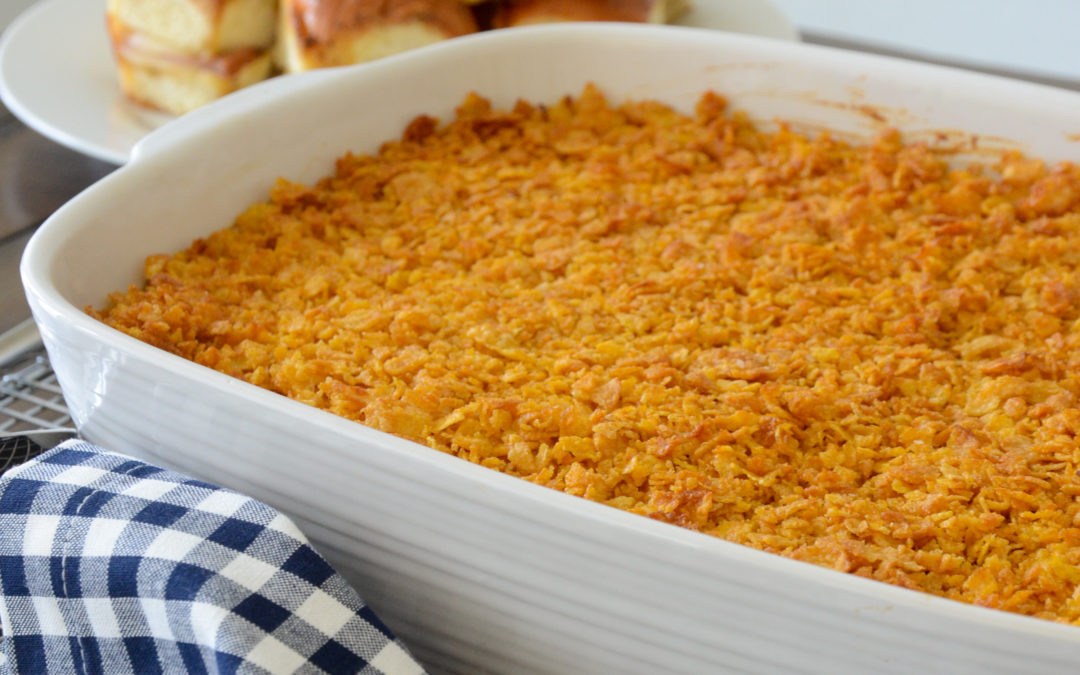Written by Katherine Sasser.
Photos by Elizabeth McLaurin.
Several years ago, my husband and I were out on a date at a very nice restaurant. The waiter was ready to take our order, and I wanted the potatoes au gratin as my side dish. When it came time for me to verbalize my wishes, I hesitated, uncertain as to how to say what I wanted.
I knew that most people, particularly most Texans, pronounce this side dish as “potatoes aww GRAH-tun.” It’s the way it’s done. Even our waiter had said it this way.
I also know the name of this creamy potato side dish is a French phrase and the correct pronunciation is “potatoes uh gruh-TAW.” But in the moment, on my date, in front of the waiter, I froze.
GRAH-tun or gruh-TAW?
Texan or French?
Do the right thing, or do the other right thing?
I didn’t want to be the jerk that sounded too fancy for my own good, but I also didn’t want to act like I was unaware of the correct way to say these words and come off as uneducated. We were in a linen-napkin establishment after all. If you can’t bring out the French in that setting, when can you?
After taking way too long to consider my options, I went against what I wanted to say (the French) and ordered the potatoes using the familiar Texan vernacular.
“I’ll take the potatoes aww GRAH-tun,” I said, wondering if I’d made the right choice. I’m honestly not sure if there was a way to navigate this situation and leave feeling great about either choice.
It’s Brussels sprouts. Always a capital B and always plural, because the dish refers to the country of Brussels.
It’s amandine. Not almondine. Because, again, it’s French. Yes, it involves almonds, but that’s not what the dish is called, regardless of what you’ve read otherwise.
And, dear friends, it is hashed browns, not hash browns.
Does any of this matter? In the grand scheme of things, not really. However, there is a certain degree of enlightenment and quenched curiosity that comes in knowing the accurate way a word is spelled or pronounced, even when the majority of society begins to change the lexicon and we find ourselves seeing the new version become prevalent. It doesn’t make it wrong or right, but it does make it interesting to know the difference.
To bring this idea full circle, and to get to the point of this entire post, Hashed Brown Casserole is not fancy, is not French, but is frequently misspelled. It also happens to be a winner of a side dish, no matter how you spell it.
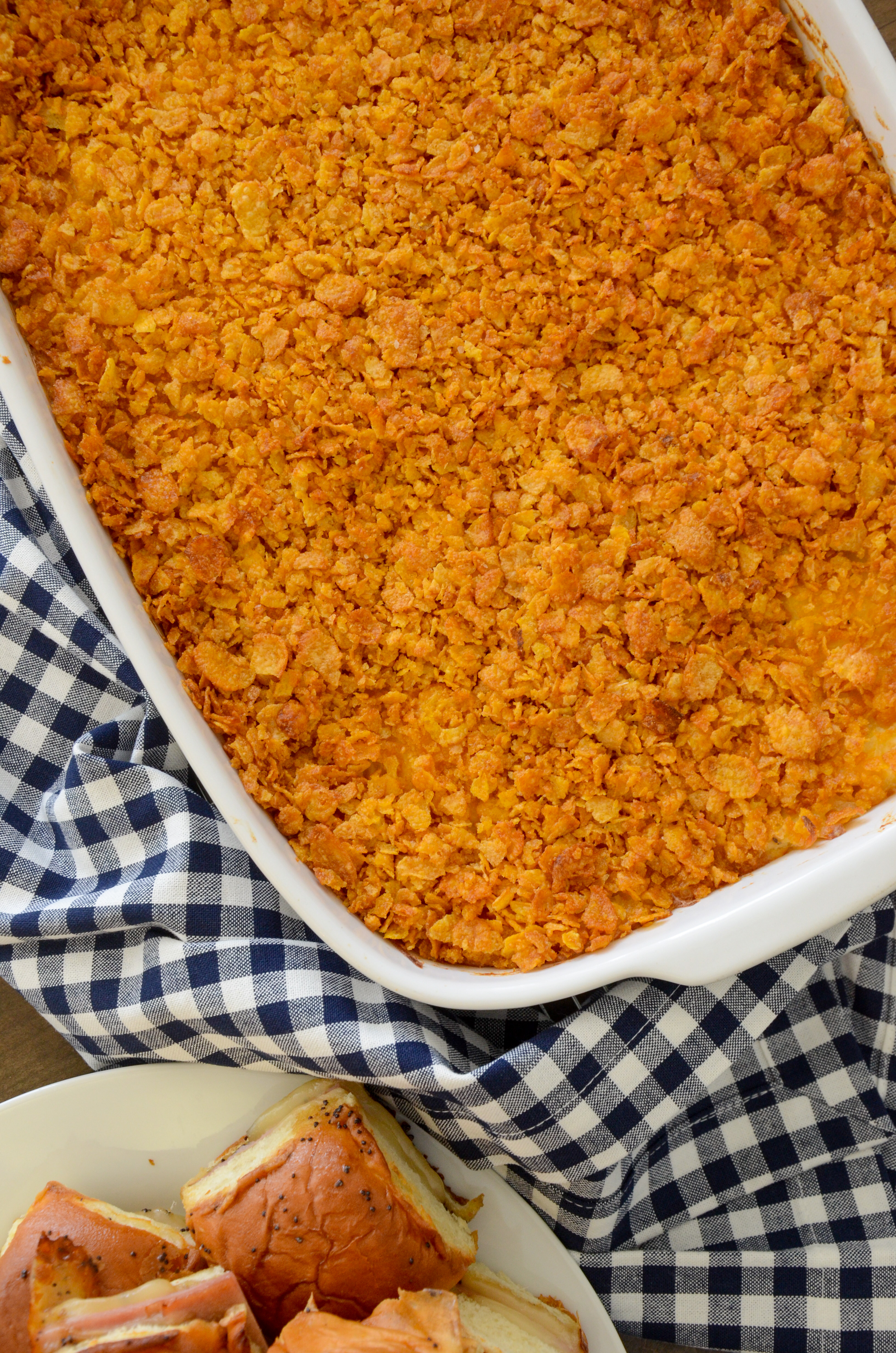
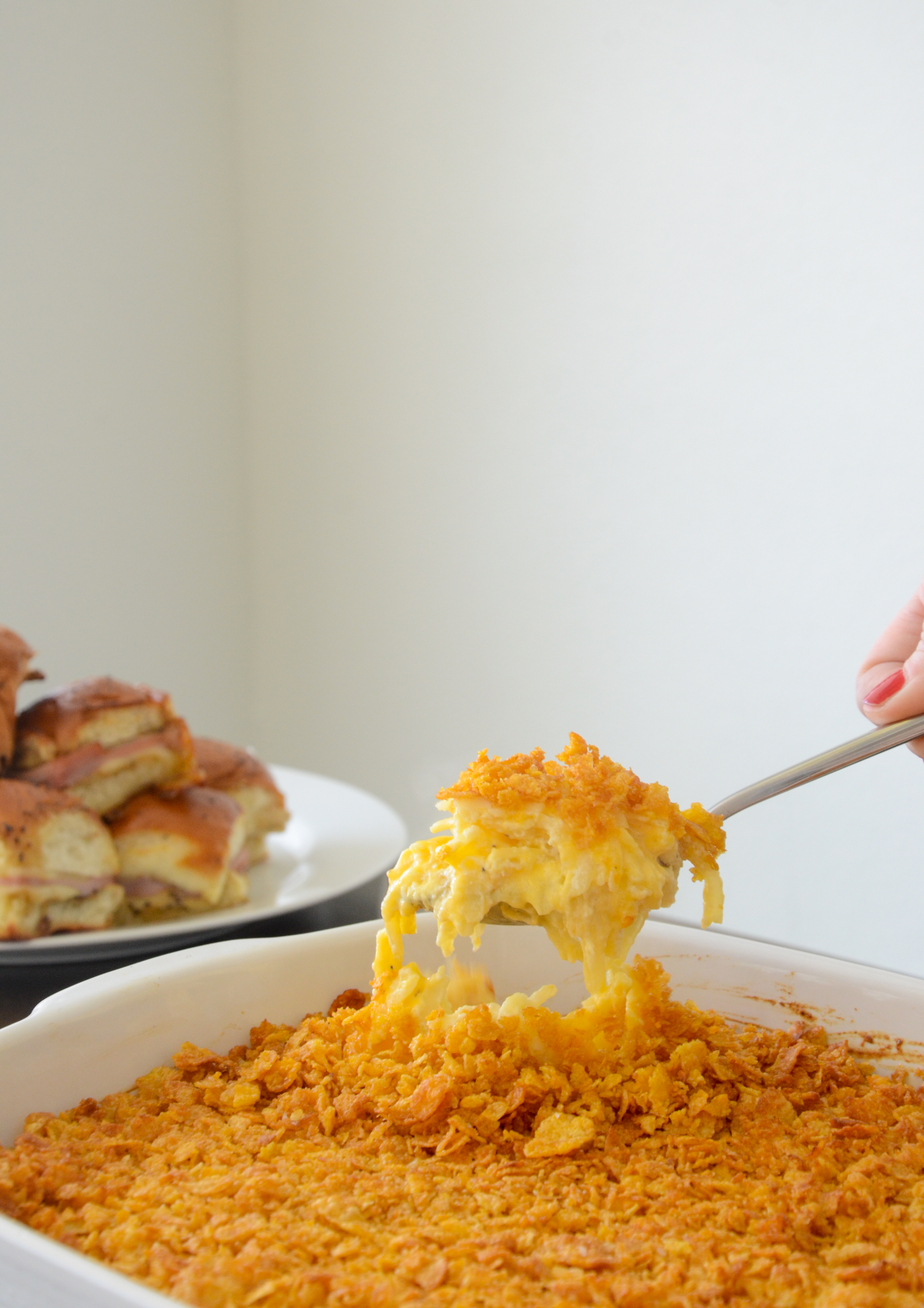
The beautiful truth about Hashed Brown Casserole is there isn’t a wrong setting in which to serve it. It morphs effortlessly from casual weeknight dinner, to baby shower brunch, to upscale holiday table without a single complaint. There is nothing fancy about it, but it draws fans from all age groups with such fierce loyalty that no one, not even the most well-bred of your guests, not even the distant grandmother that knows the correct way to pronounce au gratin and spells Brussels correctly every time, will complain about such a pedestrian side dish making an appearance at an elegant buffet.
Everyone loves Hashed Brown Casserole.
My favorite part about Hashed Brown Casserole, as a home cook, is the ease at which this top ten side dish comes together. It’s technically cooking, but just barely. The ingredients go straight from container to bowl, requiring nothing from you besides an ample stirring.
Hashed Brown Casserole is the best of both worlds. It is the French pronunciation of au gratin and the acceptable Texan vernacular. It is the correct spelling of Brussels and the commonplace misspelling. It is the amandine and the almondine on your green beans. It is the right thing and the other right thing, neither wrong, both acceptable, and both accomplishing the delicious desired end for you and your guests.
Hashed Brown Casserole
serves 8 to 10
for the FILLING
1 (16-ounce) container sour cream
1 (10-ounce) can cream of chicken soup
2 teaspoons Kosher salt
1/2 teaspoon ground black pepper
16 ounces cheddar cheese, grated
1/2 cup (1 stick) unsalted butter, melted
1 (32-ounce) package frozen hash brown potatoes, thawed
for the TOPPING
6 cups cornflakes
1/4 cup (1/2 stick) unsalted butter, melted
1/2 teaspoon kosher salt
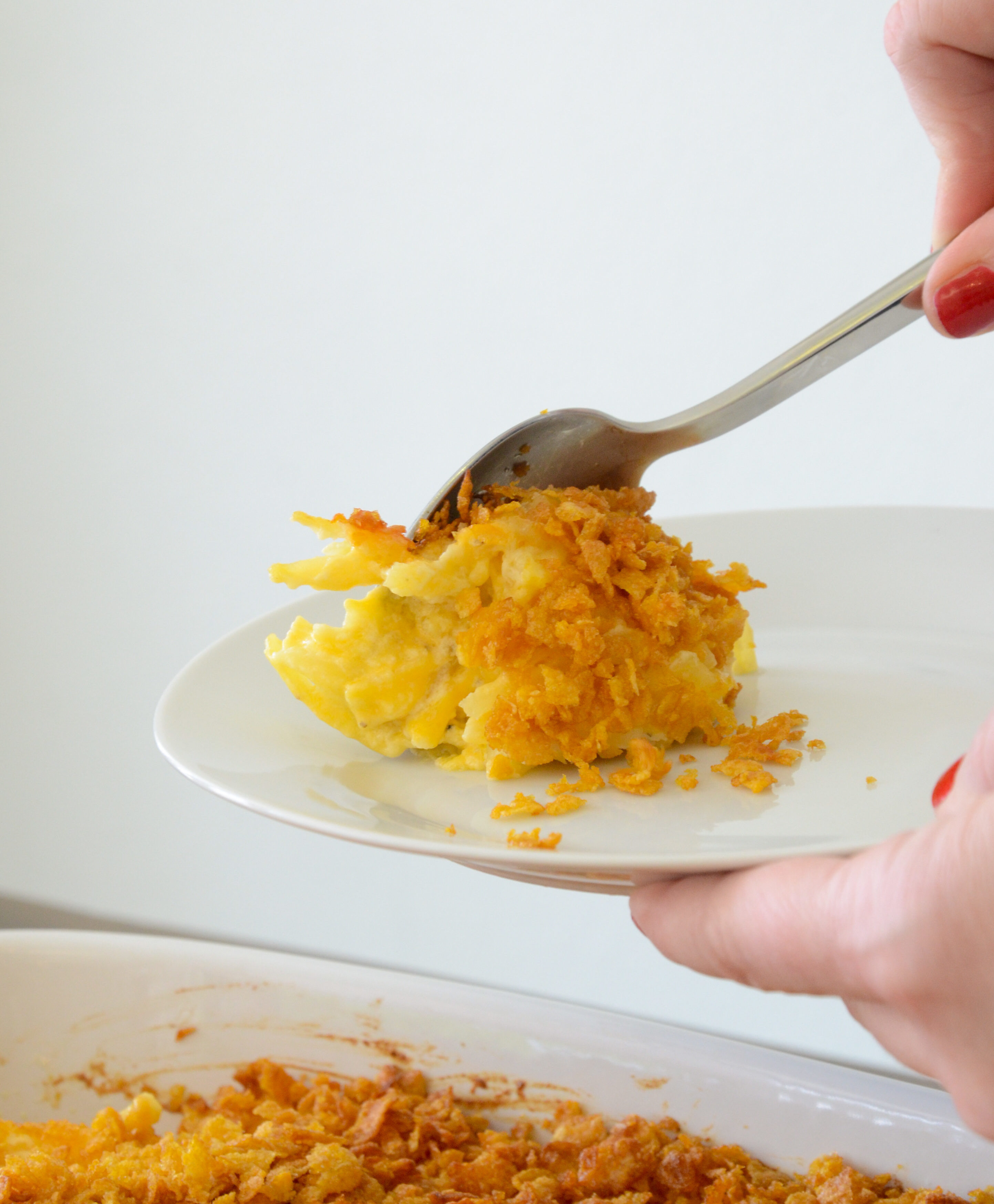
Preheat the oven to 350.
Grease a 9X13-inch baking dish with non-stick cooking spray. Set aside.
In a large bowl combine the sour cream, soup, salt, and pepper. Stir until well combined and no streaks of sour cream or soup remain. Next, add the grated cheese and melted butter. Again, stir until well combined. Finally, add the potatoes and stir until coated in the creamy cheesy base. The order in which you combine these elements matter. Avoid the temptation to dump everything in the bowl all at once.
Spread the potato mixture evenly into the prepared pan.
In the same large bowl that you used for the potato mixture, add the 6 cups of cornflakes. Using your hands crush the flakes slightly until you have small to medium crumbs. Add the melted butter and salt and toss to combine. Press the cornflake mixture on top of the potato mixture.
At this point you can bake the casserole for 45 minutes until hot and bubbly. Or, if you desire, you can cover it and store it refrigerated for a day until you are ready to serve it.
